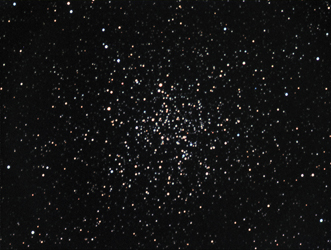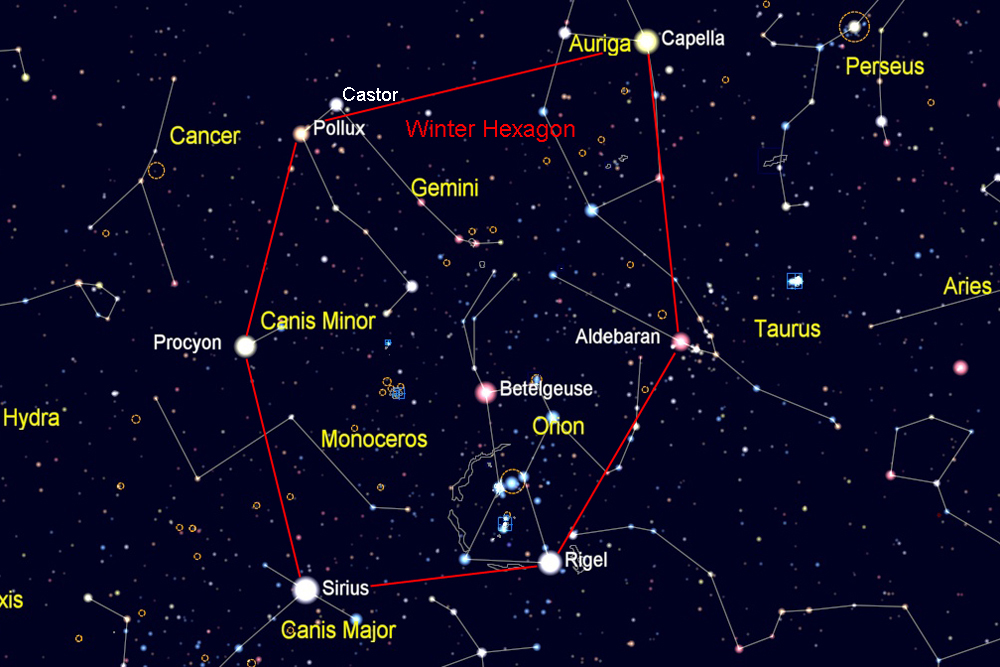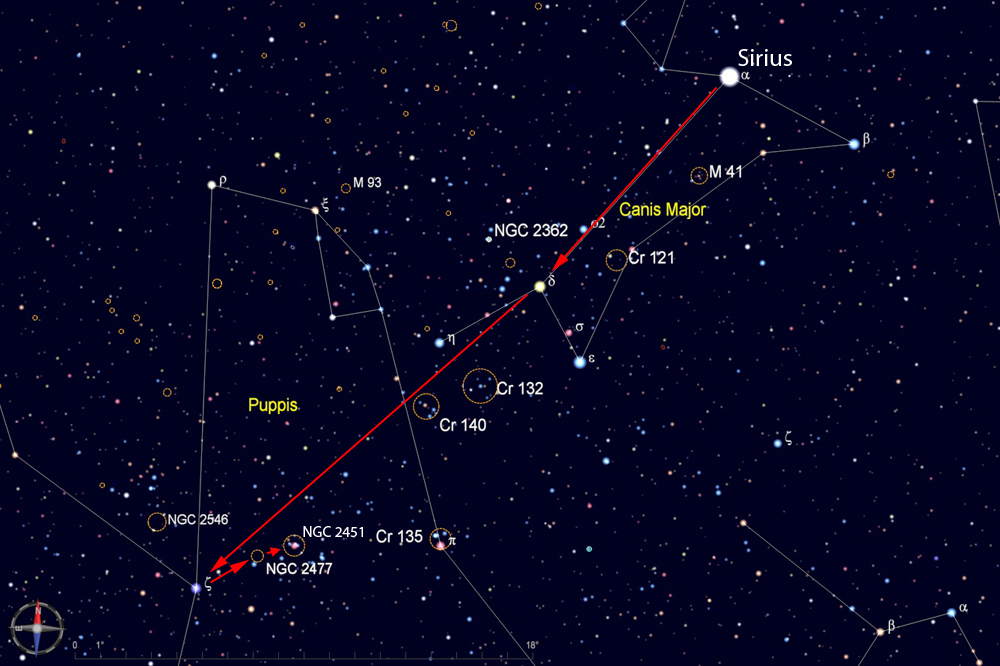
Find the Winter Hexagon, which is composed of six of the brightest stars in the sky--Sirius, Procyon, Pollux, Capella, Aldebaran, and Rigel. On mid-winter evenings, these stars form a large oval stretching from low in the south to nearly overhead. As spring begins, the Winter Hexagon sinks toward the west. The constellation Orion and its bright red star Betelgeuse are inside the Hexagon.
For this star hop, find Sirius, the brightest star in the sky.

Sirius is known as the "dog star," and it forms the neck region of the constellation Canis Major, the big dog. From Sirius, look to the southeast to find δ (delta) Canis Majoris, one of the three bright stars that form the back leg and tail of the dog. From δ, continue in this direction for another 18 degrees (almost 2 fists held at arm's length) to find 2nd magnitude ζ (Zeta) Puppis. Now backtrack to the northwest about 3 degrees to reach NGC 2477 and another 2 degrees to reach NGC 2451.
